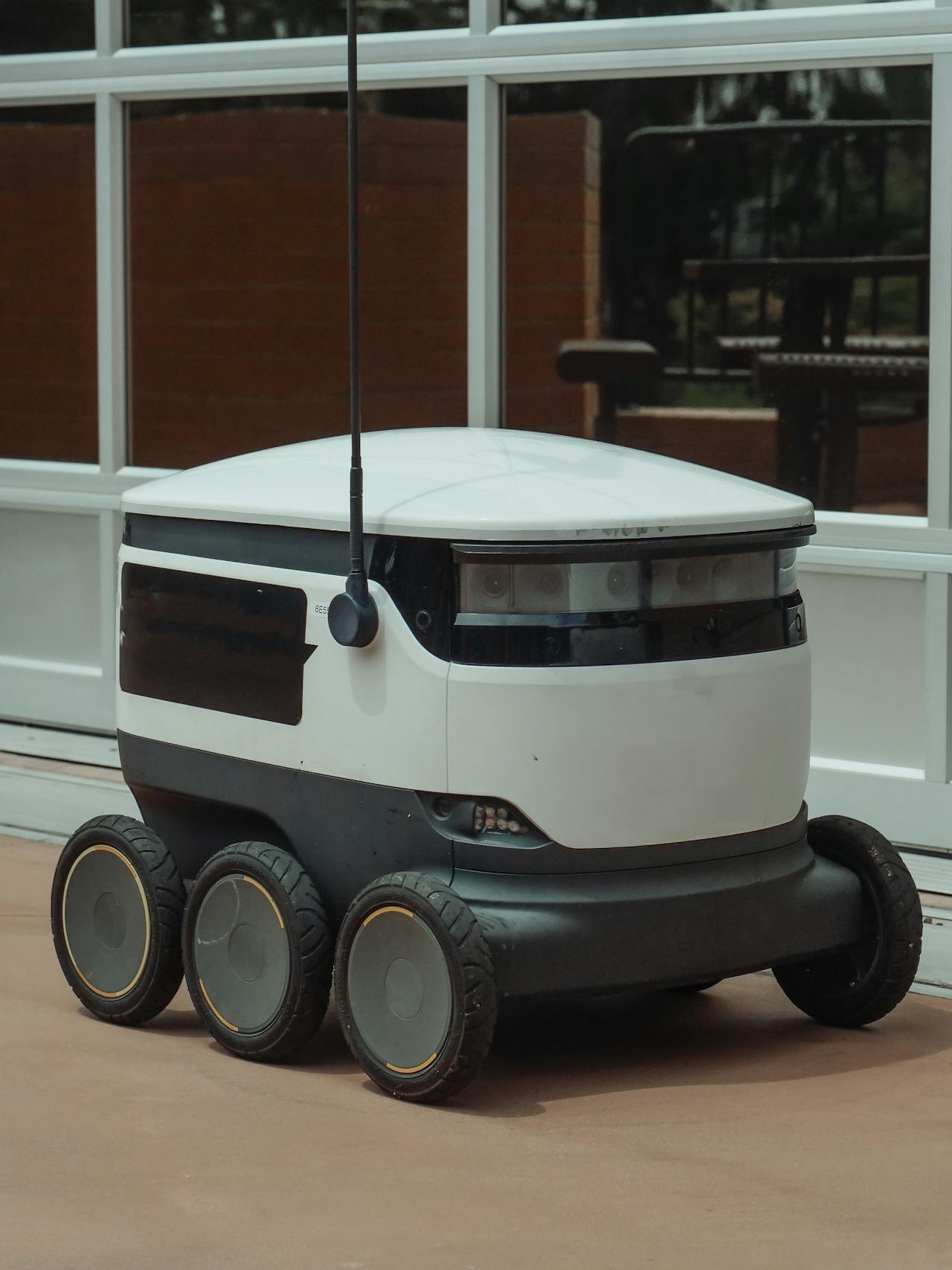In 2025, if you walk through the streets of San Francisco, Phoenix, or Berlin, you’re likely to see a car with no driver—just a small spinning LIDAR sensor on top. AI Autonomous driving, once a futuristic concept, is now a tangible part of daily life in parts of the U.S. and Europe.
But the question still looms large:
Is AI really reliable enough to take the wheel?
Or are we handing over control too early, entrusting algorithms with our lives?
This article will give you a full breakdown of the current state of AI driving, key risk factors, technology bottlenecks, global regulations, and what ordinary consumers should be paying attention to.
1. From Assisted Driving to Full Autonomy — Where Are We Now?
Autonomous driving is classified from Level 0 to Level 5.
Most systems currently on the road—like Tesla’s Autopilot, BMW’s Highway Assistant, or Mercedes-Benz Drive Pilot—are in Level 2 to Level 3.
| Level | Description | Who Is Responsible? |
|---|---|---|
| L0-L1 | Driver assistance only | Driver |
| L2 | Partial automation (hands off) | Driver |
| L3 | Conditional automation | System, but with fallback |
| L4 | High automation (no driver needed) | System |
| L5 | Full automation, any scenario | System |
In 2025, only a few companies have truly achieved Level 4 operations on limited routes—such as Waymo’s robotaxis in Arizona and Cruise’s night service in parts of San Francisco.
Tesla remains controversial: it claims FSD (Full Self Driving) is close to Level 4, but still requires human oversight.
2. What Are the Real Safety Risks of AI Autonomous Driving?
From a technical standpoint, AI systems have improved significantly in areas like:
- Pedestrian recognition accuracy: Up to 98%
- Real-time road condition analysis: Faster than human response
- Predictive behavior modeling: Can preempt dangerous maneuvers
But risks still remain—some even unique to AI systems:
- Data bias: Training data often lacks representation of rare scenarios (e.g., a wheelchair user crossing a freeway)
- Black box logic: Decisions can’t always be explained or traced
- Ethical dilemmas: In an unavoidable crash, who does the car choose to protect?
In 2023, Cruise had to recall its fleet after an accident where the AI failed to detect a pedestrian lying on the road.
This sparked debates: Can machines really “understand” context, or are they simply reacting to patterns?
3. How Are the U.S. and Europe Regulating AI Autonomous Driving?
🇺🇸 United States:
- NHTSA (National Highway Traffic Safety Administration) updated its guidelines in 2024, requiring L3 and above systems to log decision data.
- California DMV suspended Cruise’s driverless license due to safety violations in late 2023.
- New York and Texas are offering subsidies for AV fleet trials, but mandate human backup drivers.
🇪🇺 European Union:
- The 2025 EU AI Act classifies autonomous driving AI as “high-risk” and mandates:
- Human-in-the-loop override mechanisms
- Algorithm transparency
- Data traceability for all L3+ systems
- Germany allows L4 operations in select cities with government-monitored geofencing.
Overall, Europe focuses more on explainability and liability, while the U.S. promotes innovation with fewer federal restrictions.
4. Which Companies Are Leading the Way?
Here are some major players shaping the AI driving landscape in 2025:
| Company | Key Strengths | Region |
|---|---|---|
| Waymo | L4 robotaxi operations, real-world data scale | U.S. (Alphabet) |
| Tesla | Advanced neural net driving, FSD Beta rollout | Global |
| Cruise | Urban night driving, GM-backed infrastructure | U.S. |
| Mobileye | Modular AV stacks, adopted by BMW & VW | Israel/EU |
| Baidu Apollo | Open platform, Chinese government support | China |
| Mercedes-Benz | First L3 approved for German autobahns | Europe |
In particular, Waymo’s safety record is becoming the industry gold standard—over 3 million miles with zero fatal crashes as of Q2 2025.
5. Will AI Driving Become Mainstream in the Next 5 Years?
According to a 2025 survey by Deloitte:
- 62% of U.S. consumers still feel unsafe riding in a fully autonomous car.
- 47% of Germans say they “would not purchase an AI-driven vehicle yet.”
- But adoption is growing fast in fleet-based logistics, especially for last-mile delivery and trucking.
Key factors accelerating growth:
- AI sensor costs dropped by 30% between 2020–2025
- 5G/6G infrastructure rollout enables real-time remote control backup
- Urban congestion pushes policymakers to support driverless ride-sharing
FAQ: AI Autonomous Driving Safety in 2025
Is AI driving really safer than human drivers?
In some controlled environments, yes. AI systems don’t get tired, distracted, or intoxicated. Data from Waymo and Cruise suggests fewer accidents per mile than average human drivers. However, AI still struggles with unexpected scenarios or rare events—so “safer” doesn’t mean perfect.
What are the main dangers of AI self-driving cars?
Key risks include:
- Misinterpreting unusual road situations
- Data bias from training sets
- “Black box” decisions that lack transparency
- Ethical dilemmas (e.g., who to save in an unavoidable crash)
Are there fully autonomous (Level 5) cars in 2025?
Not yet. Most systems are Level 2 or 3. Level 4 exists in limited areas (e.g., Waymo in Phoenix), but true Level 5—cars operating everywhere without a driver—is still years away.
Can I buy a fully autonomous car now?
Not exactly. Tesla’s FSD and Mercedes-Benz Drive Pilot offer advanced assistance, but you’re still legally the driver. No country currently allows consumer-owned Level 4 or 5 vehicles without human fallback.
What if an AI car crashes—who’s responsible?
That depends on jurisdiction and vehicle level:
- In the U.S., liability often falls on the manufacturer or software provider for L3+ systems.
- In the EU, strict documentation is required to determine fault.
Some insurance providers are now offering AI-specific liability coverage.
Which countries are leading in AI driving regulation?
- U.S.: More innovation-friendly, but state-by-state rules vary.
- EU: Focus on safety, transparency, and human oversight via the AI Act.
- China: Strong government support, rapid deployment in city zones.
Will I be forced to switch to AI driving in the future?
Unlikely. While autonomous fleets will expand (especially for deliveries and taxis), personal vehicle autonomy will remain optional for at least the next decade. But expect tighter emissions and safety regulations that favor AI vehicles.
How can I stay informed about AI driving developments?
Follow industry leaders like Waymo, Tesla, and Mobileye, check updates from the NHTSA and EU Commission, and subscribe to trusted tech and mobility news sites like:
Summary: Safer, but Not Fully Safe—Yet
The truth is: AI driving is already safer than the average human in many scenarios—but it’s not foolproof. It can’t improvise. It doesn’t feel nervous before making mistakes—and that’s both its strength and its weakness.
In 2025, AI on the road is like a straight-A student who still might fail the pop quiz on the weirdest day.
So, should we trust AI behind the wheel?
Perhaps yes—but only if we keep one hand near the brake.



